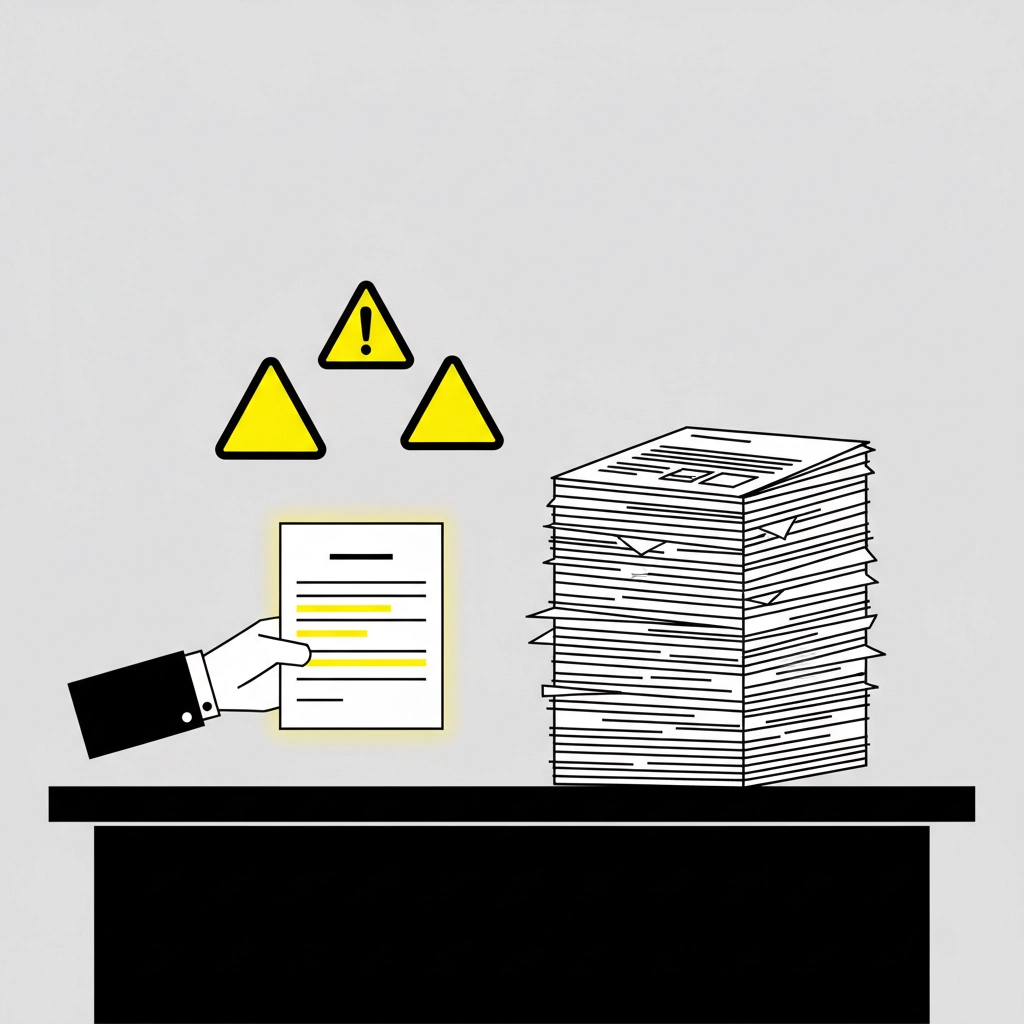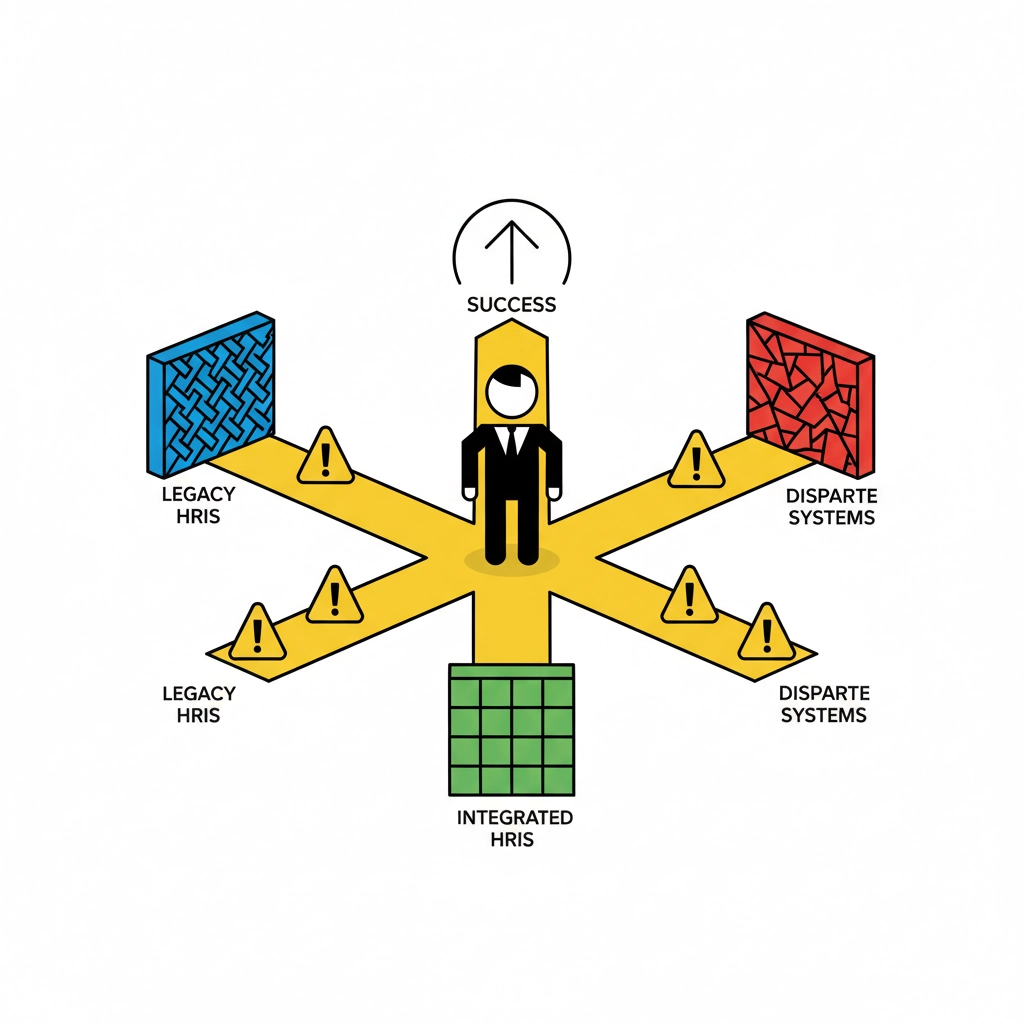HRIS Implementation Secrets Revealed: What Software Vendors Don't Want You to Know
- Justin Hall
- Oct 28
- 5 min read
Here's a statistic that will make your CFO lose sleep: 65% of HRIS implementations fail, costing companies between $150,000 and $2.5 million in wasted resources, lost productivity, and emergency fixes. Yet when was the last time a software vendor led with that number during their sales pitch?
The truth is, HRIS implementation involves far more complexity, cost, and risk than most organizations anticipate. Vendors have strong financial incentives to downplay these challenges, using sophisticated tactics to make their solutions appear simpler and cheaper than they actually are.
After working with dozens of companies through their HR technology journeys, we've seen these failures follow predictable patterns. The good news? These disasters are entirely preventable once you understand what's really happening behind the vendor's polished sales presentation.
The Teaser Implementation Trap

Picture this scenario: You receive two HRIS implementation proposals. Vendor A presents a sleek two-page document promising to deliver their solution remotely in 6-8 weeks for $10,000. Vendor B submits a comprehensive thirty-page proposal detailing methodology, data migration analysis, user acceptance testing, training, and readiness assessment for $50,000 over 14-18 weeks.
Your immediate reaction? "Why is Vendor B charging $40,000 more for the same thing?"
But that's exactly the wrong question. The real question should be: "What has Vendor A excluded to make their deployment so much cheaper and faster?"
This is the teaser implementation trap, and it's one of the most common tactics in the industry. What you're actually getting with that $10,000 proposal is about one-third of a system being configured, leaving significant portions of the application unimplemented. You've committed to a vendor, signed a contract, but you don't actually have a functional system that meets your needs.
Companies falling for teaser implementations often find themselves paying for multiple "phases" that should have been included in the original scope, ultimately spending more than the comprehensive proposal while dealing with months of additional delays.
Hidden Costs That Destroy Budgets
The most overlooked expense in HRIS implementation isn't the software license: it's internal labor time. As a rule of thumb, add 50-75% to your vendor's quoted implementation cost to account for the real expenses you'll face.
Your HR team, IT staff, and other employees will spend hundreds of hours on implementation activities rather than their regular responsibilities. This includes:
One client recently told us, "We budgeted $75,000 for implementation and ended up spending $140,000 when we factored in all our internal time and the infrastructure changes we needed."
Selection Mistakes That Cost Millions

The most expensive HRIS mistakes happen before you even sign a contract. Companies frequently make selection decisions based on flawed reasoning that seems logical but leads to costly disasters.
Common selection killers include:
Choosing systems based on someone's previous company experience without evaluating current needs
Letting your accounting team select HR systems based solely on their financial integration requirements
Making decisions based on vendor discounts or broker partnerships rather than functionality
Selecting the "highest rated" system without considering organizational fit
Building in-house solutions to "save" on licensing costs (this almost always backfires spectacularly)
We worked with one organization that saved $80,000 annually by sticking to objective criteria instead of letting their CFO choose based purely on integration with existing accounting software. The CFO's preferred system would have created massive workflow inefficiencies that would have cost far more than any integration savings.
The solution? Start with measurable objectives before looking at a single vendor demo. Define exactly what you want to achieve in quantifiable terms. This prevents influential stakeholders from hijacking the process with subjective preferences that don't align with organizational needs.
Vendor Lock-In Strategies
Here's what vendors understand that many buyers don't: switching HRIS systems is painful and expensive. So, they deliberately structure contracts to exploit this lock-in advantage.
Vendors know most organizations add modules over time. Their initial proposals look affordable, but the total cost of ownership escalates dramatically as you need additional functionality that wasn't included in the base package. Need recruiting tools? That's an extra $5,000 annually. Want performance management? Another $3,000. Advanced reporting? $2,500 more.
After you've invested significant time, money, and effort into implementing a system, extracting your data and moving to a different vendor becomes prohibitively expensive. Vendors count on this dynamic when negotiating contract terms and pricing for future features.
The most effective defense against vendor lock-in is comprehensive needs analysis upfront. Understand not just your current requirements, but where your organization is headed over the next 3-5 years. Build those future needs into your initial evaluation and contract negotiations.
What Actually Drives HRIS Success

Successful HRIS implementations require far more than software configuration. After analyzing hundreds of implementations, the patterns that separate success from failure are clear:
Stakeholder buy-in is non-negotiable. This means identifying all stakeholders early, establishing clear communication channels between project leaders, setting realistic expectations and deadlines, and scheduling comprehensive training for everyone who will interact with the new system.
Process documentation must happen before implementation begins. You need to analyze your current HR operations to identify suboptimal processes. Consider different employee classifications, pay frequencies, benefits deductions, data entry requirements, systems integrations, time and attendance policies, and PTO policies.
Third-party coordination cannot be overlooked. Plan integrations with benefit providers, ensure the new HRIS can handle all applicable regulations and business rules, and notify financial institutions and other connected systems.
The Real Implementation Timeline
Comprehensive HRIS implementation follows six distinct phases: search, plan and align, define and design, configure and test, train and communicate, and deploy and sustain.
The configure and test phase alone requires creating a core test team to test the new system and provide feedback, followed by user acceptance testing where additional users provide final feedback. Before go-live, technical staff training, communication plans, FAQ pages, and support documents must all be prepared.
This process requires 14-18 weeks minimum for a properly planned implementation, not the 6-8 weeks promised in teaser proposals. Companies that try to rush this timeline invariably face post-launch problems that cost more to fix than doing it right the first time.
Post-Implementation: The Work Continues
Once implemented, HRIS management requires ongoing attention that vendors rarely emphasize during sales. Regular data maintenance through audits and clean-ups ensures accuracy of employee records. Performance monitoring involves tracking system response times and user satisfaction. System updates and maintenance must be performed regularly to access new features and maintain compliance.
These ongoing responsibilities require dedicated internal resources: yet another cost that doesn't appear in the vendor's initial proposal but becomes necessary for long-term success.
Making HRIS Implementation Work for Your Business
The difference between HRIS success and failure often comes down to having an experienced guide who understands both the technology landscape and change management principles. The vendors selling you software have incentives that don't always align with your implementation success.
At JHHR, we've helped companies navigate these challenges, avoiding the common pitfalls while maximizing their technology investments. We know which questions to ask vendors, how to structure contracts that protect your interests, and most importantly, how to manage the human side of technology change.
Ready to implement HRIS the right way? Let's discuss how we can help you avoid these costly mistakes and achieve the HR technology success your organization deserves.
Comments